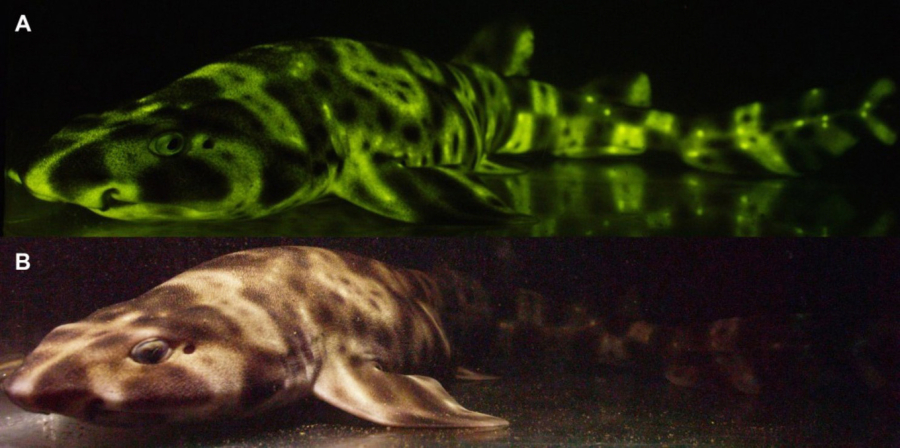Catsharks aren’t harmful to humans, but they also aren’t too much to look at — by the light of day, that is. In blue light, certain species give off a gorgeous glow. Now researchers have created a camera to simulate the way these sharks see one another deep under the sea. And through this lens, they say, the glow grows stronger and more distinct the deeper the sharks swim. Their results were published recently in Scientific Reports.
“We’ve already shown that catsharks are brightly fluorescent, and this work takes that research a step further, making the case that biofluorescence makes them easier to see by members of the same species,” John Sparks, a curator in the American Museum of Natural History’s Department of Ichthyology and a co-author on the paper, said. “This is one of the first papers on biofluorescence to show a connection between visual capability and fluorescence emission, and a big step toward a functional explanation for fluorescence in fishes.”
The chain catshark (Scyliorhinus retifer) and the swell shark (Cephaloscyllium ventriosum) that Sparks and his colleagues studied spend most of their lives around 2,000 feet below the surface of the ocean, so they’ve been neglected by researchers.
At that depth, most wavelengths of visible light are absorbed by water, leaving animals bathed mostly in blue hues. But catsharks have molecules in their skin that allow them to absorb some of that blue and re-emit it as other colors, giving them what’s called biofluorescence (as opposed to bioluminescence, where the light itself is produced by the organism, as it is in fireflies).



